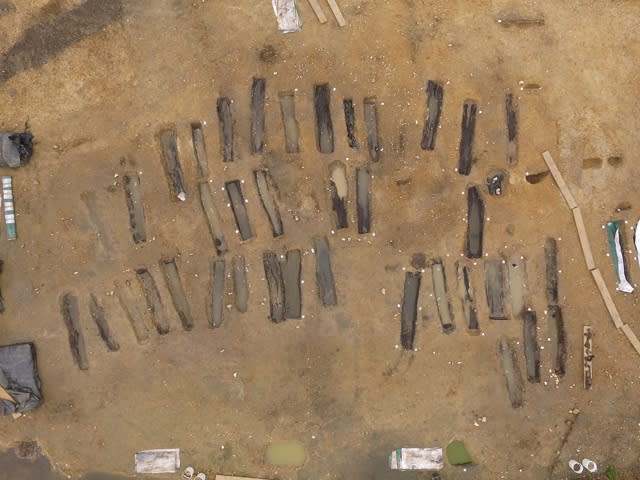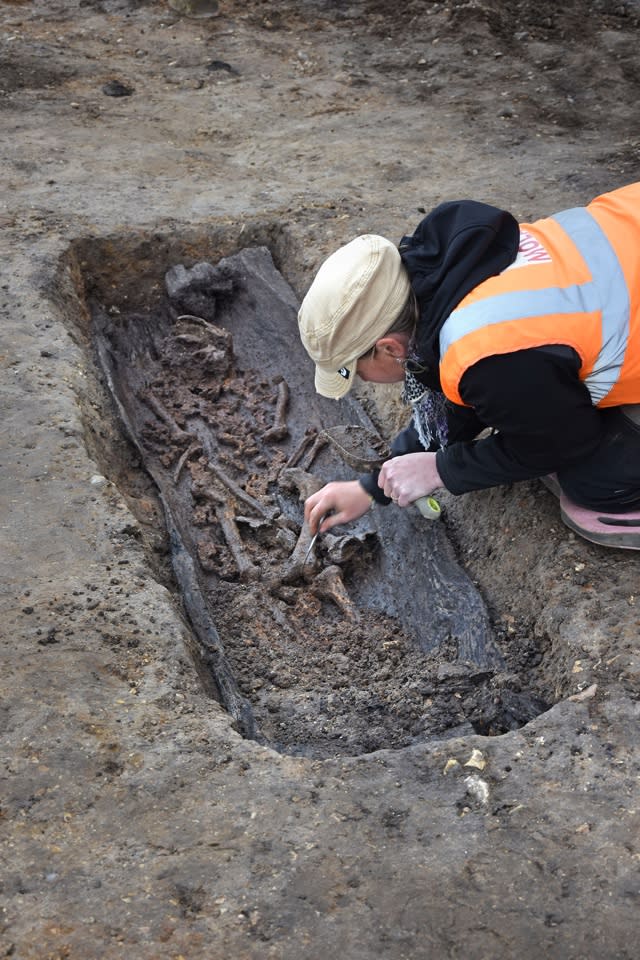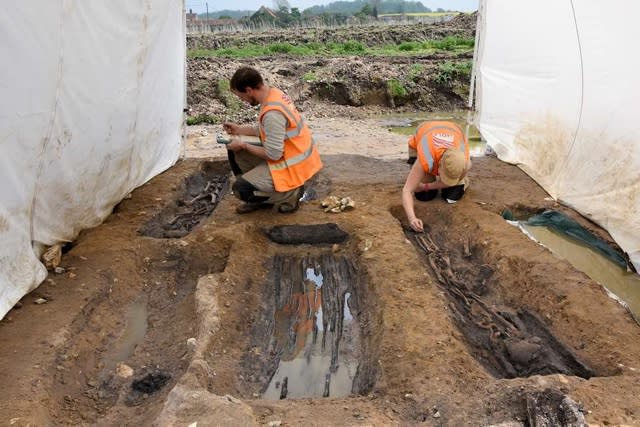81 'rare' Anglo Saxon coffins found in Norfolk

Archaeologists have discovered 81 'extremely' rare' coffins at a site in Great Ryburgh, Norfolk.
The tree trunk coffins were found at a previously unknown early Christian Anglo-Saxon community's cemetery, and offer a unique opportunity to increase knowledge on the early settlement.
See also: 2,000-year-old Roman road found under Kent shop
See also: Man finds Roman artefact 'worth £300k' in Somerset
An excavation funded by Historic England was carried out by the Museum of London Archaeology (MOLA) ahead of the construction of a lake and flood defence system. Archaeologist Matthew Champion made the initial discovery.
The MOLA team said that the waterlogged conditions of the river valley led to the remarkable preservation of burials that are extremely rare in the archaeological record, including plank-lined graves and tree-trunk coffins dating from the 7th to 9th century AD.
Our archaeologists have discovered extremely rare Anglo-Saxon burials in Great Ryburgh, Norfolk https://t.co/IXNeBI12Bppic.twitter.com/tlGfqkluIJ
— MOLA (@MOLArchaeology) November 16, 2016
A statement from MOLA read: "We've been able to reveal evidence that this may have been the final resting place for a community of early Christians including a timber structure thought to be a church or chapel, of which there are few examples from this period.
"The wooden grave markers, east-west alignment of the coffins and the evident lack of grave goods all support the Christian origins of the cemetery.
"Anglo-Saxon coffins seldom survive because wood decays over time. Until now, evidence of these amazing burials has largely consisted of staining in the ground from decayed wood, but we've been able to properly excavate these rare and fascinating coffins, graves and skeletons because they have been brilliantly preserved in the ground in a combination of acidic sand and alkaline water."

The 81 dug-out coffins discovered comprise of oak trees split in two length-ways and hollowed out. This type of coffin was first seen in Europe in the Early Bronze Age and reappeared in the early medieval period.
From Britain, they are mentioned in records from the late 19th century, but this is the very first time they have been properly excavated and recorded by modern archaeologists.
Mola added: "We know that the burials, in hollowed out logs, were positioned in the lower half and the upper half rested on top to form a lid. Although they aren't decorative, it would have taken considerable effort to hollow a single coffin, an estimated four man days. The fact that evidence for similar burial rites is also found in earlier cemeteries may signify the blending of pagan and Christian traditions.
"The six plank-lined graves are very rare in in this country and these are believed to be the earliest known examples from Britain. The graves were cut into the ground, lined with expertly hewn timber planks, the body placed inside and planks positioned on top to form a cover. The relationship between the two burial types is not fully understood, but may denote an evolution in burial practices. Tree-ring dating is being undertaken to date the timber."

The discovery is shedding light on a previously unknown religious site and the fascinating lives of the early Christian rural community.
Research and scientific testing, in the form of ancient DNA, stable isotope and dental calculus analysis, will help to archaeologists to say more about where these people came from, whether they were related, and what their diet and health were like.
Duncan Wilson, Chief Executive of Historic England said: "These rare and exceptionally well-preserved graves are a significant discovery which will advance our understanding of Middle-Saxon religious beliefs and rural communities."
Tim Pestell, Curator at Norwich Castle Museum, where the finds from the dig will be kept, said: "The site was in use in the heyday of the Anglo-Saxon kingdom of East Anglia and positioned next to a strategic river crossing. As with much of East Anglia at this early date, we have no documentary sources that relate to this site and so it is archaeological finds like this that are crucial in helping us to understand the development of the kingdom."




